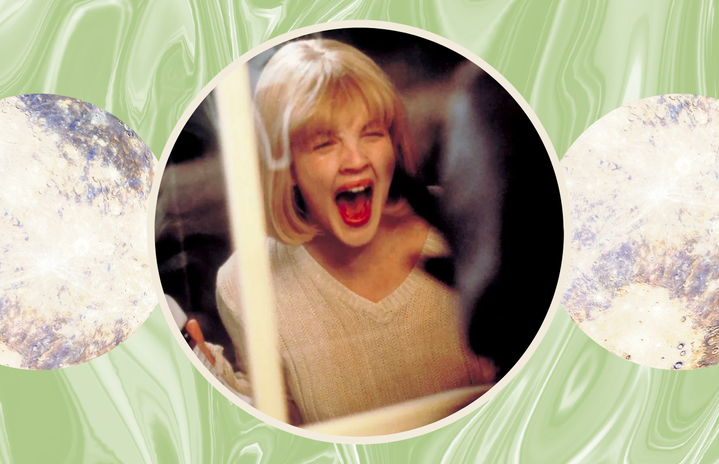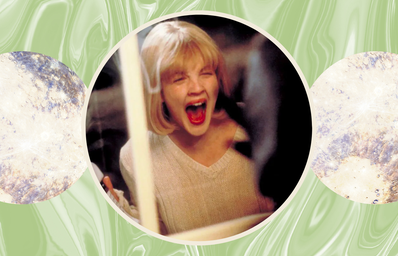The ‘Final Girl’ is one of the most famous horror movie tropes of all time. Defined simply as the ‘final heroine left at the end of a horror movie’, it is most commonly traced back to the slasher films of the 70’s and perfectly encapsulated by characters such as Laurie in the 1978 film ‘Halloween’. However, how is this trope problematic, and how has it been seen to evolve in recent years?
Coined by Professor Carol J. Clover in 1987, the ‘Final Girl’ is one of the most common horror movie tropes of all time. She is “usually a virgin or otherwise doesn’t engage in sex – which often dooms her peers… she’s socially awkward, or even a bit of a tomboy. She also doesn’t engage in other illicit activities, like drinking or drugs – which leaves her clear-headed and ready to run. In all, she exhibits what Clover calls the ‘active investigating gaze’ of the film.” Clover goes on to state that the final girl has been given the ‘privilege’ of survival due to her implied moral superiority and purity.
In many classic movies, the ‘Final Girl’ is represented as ‘the living embodiment of stereotypical conservative attitudes of what a woman should be’ and are often shown in contrast to friends who have sex, or drink, to show how their survival is reliant on their purity and ‘innocence’. As Randy from Scream states, ‘there are certain rules someone must abide by to survive a scary movie’ and ‘sex equals death… It’s the sin factor!’. In turn, the ‘Final Girl’ trope has been heavily criticized for perpetuating heavily misogynistic tropes, who ‘served as a foil to a friend [who is portrayed as] very promiscuous. Created during a time in which the film industry was even more male-dominated than it is now, Grace Pullman describes how ‘feeling threatened, horror giants in Hollywood began killing and torturing fictional facsimiles of the liberated woman, depicting her as amoral, inferior, and vapid. They punished her with a painful, sensational death, playing out these scenarios repeatedly on the silver screen. Then they created the idealized prototype of the ‘Final Girl’ and rewarded her obedience, her purity, by sparing her life. As if to say to the women in the audience, ‘This is your only hope for survival.’ As if to say, this is how you must behave, or you’ll die. We’ll kill you”.
This trope is presented to the audience through the use of the ‘Male Gaze’, a concept once again best depicted through the ‘Halloween’ in which the escaped convict Michael Myers stalks well-behaved babysitter, Laurie. Clover suggests that these movies “focus on the concept of an outside threat and a pure, Virgin ‘princess’ who must defeat evil”, and the narrative switch within the films is “designed to align spectators not with the male tormentor, but with the female victim who finally defeat her oppressor.”
Furthermore, though eventually escaping the hands of their killers, these ‘Final Girls’ regularly still don’t have what could be deemed a happy ending. Many are brought back in sequels purely to be further tortured, killed, or institutionalized, which according to Derek Soles is the “tragic destiny” of the ‘Final Girl’, representing “an expression of a patriarchal society where capable, independent women must either be contained or destroyed”.
However, recent portrayals of the ‘Final Girl’ show them satirizing these tropes, or even breaking free from them entirely, in order to become a somewhat empowered version of the classic character we once knew.
More recent films, such as The Witch (2015), Midsommar (2019), or X (2022), portray a myriad of different girls, all of which survive to the end of their respective horror stories. Mia Goth’s portrayal of ‘Maxine’ in X perfectly encapsulates the modern-day final girl. No longer is her purity and virginity the pinnacle of her safety within the horror space, with her story itself following her and a group of others filming an adult movie. Maxine’s sexuality is not repressed, but outwardly expressed on screen regularly throughout the movie, and yet she still survives the horror’s that take place on the rural Texas farm to become the movies ‘Final Girl’. Furthermore, these ‘Final Girls’ not only break free from the stereotypes that were once upheld, but most provide a much deeper layer of character development that allows for even more intense movies all round.
The modern-day trope of the ‘Final Girl’ has evolved to portray a myriad of women who not only fight to survive, but who’s narratives are the focal point of the movie itself and who break away from the purity of the original trope to explore female sexuality and liberation.
The trope of the ‘Final Girl’ has become so widely discussed within both the horror, and wider, communities that there was even an American horror comedy film that came out in 2015 entitled ‘The Final Girls’, in which the main characters find themselves inside the horror movie they are watching and must use their knowledge of horror tropes in order to survive.
Modern day horror has ‘breathed new life’ into the ‘Final Girl’ trope, moving away from the ‘good girl’ stereotypes of movies past and towards female characters who not only survive the horrors they live through but who are shown to be actively “driving the plot forward”.
Sources
https://the-take.com/watch/the-final-girl-trope-explained


